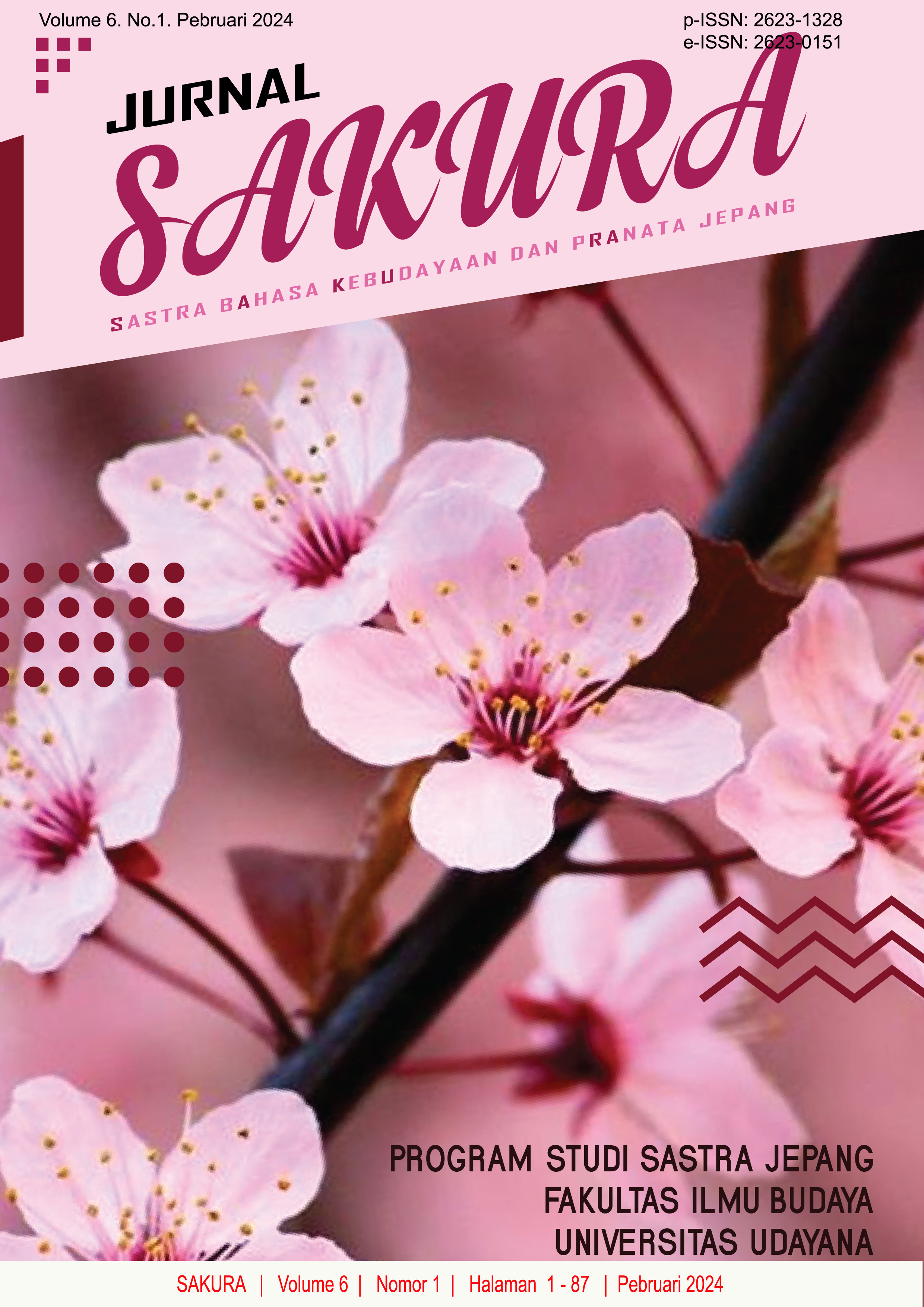Depresi pada Tokoh Kiriyama Rei dalam Anime Sangatsu no Raion
Abstract
This research focuses on the depression of the character Kiriyama Rei in the anime Sangatsu no Raion. The purpose of the research is to analyze the symptoms, causal factors, and impact of depression on Kiriyama Rei. The theories used are literary psychology theory by Wellek and Warren and cognitive theory of depression by Beck and Alford. Informal and descriptive methods are used as research methods. The method of data collection is the method of observe and note taking. In the data analysis stage, the descriptive analysis method is applied and in the data analysis presentation stage, the informal method is applied. Based on the results of the analysis, the symptoms of depression experienced by Kiriyama Rei are affective group in the form of emotions of sadness, motivational group in the form of desire to escape and loss of motivation, negative group in the form of negative view of self, negative interpretation of experience, and critical view of the future, and physical and vegetative group in the form of sleep disorders. The causative factors of Kiriyama Rei depression are specific stres and non-specific stres. The effects of Kiriyama Rei depression are negative view of self, negative view of life experience, and negative view of the future. Kiriyama Rei was declared a depressed patient because she experienced more than five symptoms of depression in a few weeks
Downloads
References
Beck, T.A dan Alford, 2009. Depression Causes and Treatment (Second Edition). Philadelphia: University of Pennsylvatia Press.
Kamah, A. 2020. “Gambaran Post Traumatic Stres Disorder Pada Korban Konflik di Patani Thailand Selatan” (skripsi). Lampung: Prodi Psikologi Islam Fakultas Usuluddin dan Studi Agama Universitas Islam Negeri Raden Intan.
Lubis, N.L. 2009. Depresi tinjauan psikologis edisi pertama. Jakarta: PT Fajar Interpratama Mandiri.
Prabawati, W.D, dkk. 2021. ‘’Obsessive Compulsive Disorder Tokoh Sata Senda Dalam Manga Keppeki Shounen Kanzen Soubi !! Karya Touya Tobina’’. E-Jurnal SAKURA VOL 3. No. 1 Februari 2021. DOI: https://doi.org/10.24843/JS.2021.v03.i01.p04
Radityo, W.E. 2012. Depresi dan Gangguan Tidur. E-Jurnal Medika Udayana,1(1), hlm 1-16.
Ratna, N.A. 2015. Teori, Metode, dan Teknik Penelitian Sastra. Yogyakarta: Pustaka Pelajar.
Ridha, M.R dan Sutanto, M.R. 2023. Perkembangan Kepribadian Karakter Daiba Nana dalam Serial Animasi Shoujo☆ Kageki Revue Starlight: Tinjauan Psikoanalisis. E-Jurnal SAKURA VOL 5. No. 2 Agustus 2023. DOI: https://doi.org/10.24843/JS.2023.v05.i02.p03
Sonambela, A.A. 2019. “Depresi dalam Novel The Lovely Bones Karya Alice Sebold” (skripsi). Manado: Jurusan Sastra Inggris Fakultas Ilmu Budaya Universitas Sam Ratulangi
Vila, M.B. 2021. “Family, Ancestor Worship and Young Adults: The Obon Festival in Contemporary Japan” (skripsi). Kanada: School of Sociological and Anthropological Studies Faculty of Social Sciences University of Ottawa.
Wellek, R dan Warren, A. 2016. Teori Kesusastraan (Melani Budianta). Jakarta: Gramedia.
Zaim, M. 2014. Metode Penelitian Bahasa: Pendekatan Struktural. Padang: FBS UNP Press Padang.
World Health Organization. 2022. Mental Disorders.(Diakses pada tanggal 16 Juni 2022 pukul 21.30 WIB dari halaman https://www.who.int/news-room/fact-sheets/detail/mental-disorders)
World Health Organization. Constitution. (Diakses pada tanggal dari halaman https://www.who.int/about/governance/constitution)













